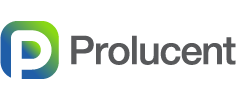Demand for travel nurses skyrocketed during the pandemic.
Not surprisingly, the hourly rates of pay for this labor resource increased just as fast. Many hospitals watched core staff leave for these lucrative opportunities, contributing further to staffing shortages and vacancies. A number of these nurses, however, didn’t opt for the typical long-distance travel assignments. Rather, they stayed and traveled in their local market. (most employers have policies that prevent this, such as a minimum miles from place of residence) Facing burnout and consistently short-staffed shifts, these nurses readily traded their stability and loyalty to the hospital and their team for flexible travel roles, aka gig roles. As hospital leaders deal with increased vacancy rates and seek ways to retain their core staff, the big question still remains: How do you acknowledge the gig mentality and stay ahead of this trend?
Our CNE at Prolucent Health, Carol Bradley, wrote a post recently titled “The Loyalty Gap in Healthcare”. With her decades of nurse leadership experience, Carol understands that earning loyalty is an “essential asset” in a healthy work environment.
“As a nurse executive, I have always believed that if we created a respectful and professionally satisfying work environment and took care of nurses in ways that matter, those same nurses would always be there to take great care of our patients. I was never disappointed.”
Hospital leaders, as well, have recognized the need to rebuild loyalty after the damaging impact of the past few years. We all witnessed the toll the pandemic took on frontline workers. Yet, as noted in Carol’s post, the value proposition of loyalty is different today and must be redefined to engage and influence today’s nurses. Providing pay raises, “loyalty pay”, or offering better benefits is a more traditional approach to preventing turnover. A report from Oliver Wyman, however, shows that nurses are often seeking alternative offerings and reasons to stay. In fact, the report indicates those who were surveyed “…ranked attention to their mental health and a focus on work-life balance as their top worries for working in healthcare rather than adequate pay or benefits”. Specifically, they want more control of their career, saying “…work-life balance, emotional demands, and flexible scheduling as key drivers in why they would consider leaving their organization.” It is clear that offering flexibility is paramount.
Flexibility is the New Currency
Flexible working options for nurses are not new. From self-scheduling to tailored schedules that fit childcare needs or school demands, hospitals have long used creative solutions to address the scheduling needs of their workforce. Empowering nurses to be more involved in their schedules demonstrates a commitment from leadership and is an important step in creating a culture of respect. Further, reports have shown that nurses who have higher levels of job satisfaction are more likely to remain employed with their current healthcare organization.
The pandemic along with the rise of the gig role, however, has forced leaders to pivot from the typical flexible offerings to find new strategies and staffing models that embrace the needs of today’s evolving workforce. Offering an internal travel program is one such option. An in-house program that offers the flexible schedules nurses desire along with potentially higher wages can be an extremely effective way to compete with the gig worker role. Whether it’s local, regional, or at the enterprise level of the health system, nurses can enjoy short-term assignments of their choice along with a schedule that best suits their lifestyle, all while maintaining the advantages of being employed by the health system. And while it is an impactful solution in stabilizing core staff, it is also a crucial step in regaining control of labor costs. Using their own staff, hospital leaders are able to take a proactive approach to vacancies and staffing needs rather than a costly, reactive one utilizing 3rd-party labor.
Offering Flexibility Comes with Challenges
Implementing an internal agency, however, is not without its challenges. The complexity of building, deploying, and managing this type of resource can be significant. To ensure it drives the intended benefits, consideration must be given to the structure, the technology to support it, and the services and expertise necessary to manage it successfully. Developing a successful internal agency requires an exploration of many important variables:
- Scope
- Size
- Pay incentive
- Getting buy-in
- Level of experience and competency management
- Scalability
- Operational logistics
Other factors to consider include the implementation and ongoing management of this resource. Some health systems build it and own it; others fully outsource it. (Prolucent is unique in that we can build it and you can own it. Your success is our success.) Regardless of your approach, developing a flexible workforce model to best meet the needs of your organization and your staff has become essential and is a significant first step in rebuilding loyalty, improving retention, and giving you back control of the labor in your own market.
Prolucent brings a new approach to workforce management. We partner with health systems to build sustainable end-to-end solutions in alignment with your workforce goals. Our AI-driven technology and custom services help you secure the workforce you need for today and the future.
We are reimagining how health systems build a future-ready workforce.

